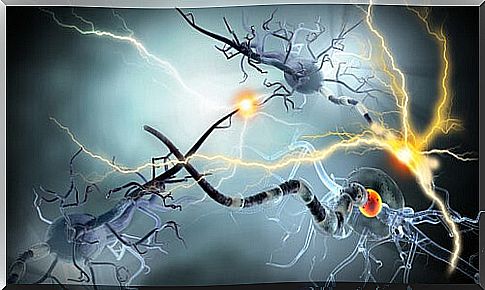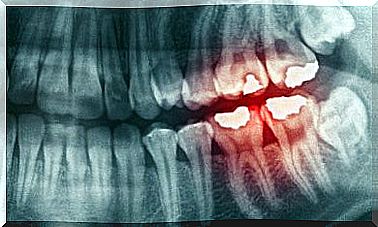What Is Multiple Sclerosis
Multiple sclerosis is a demyelinating disease that most commonly affects the central nervous system.

Multiple sclerosis is a demyelinating neurological disease that affects the central nervous system. It is a chronic disease with a very variable clinic which can evolve in different ways.
It is characterized by the appearance of plaques or areas in which the myelin of the central nervous system has disappeared. Myelin is a substance that envelops and protects the axons of neurons. Its main function is to increase the speed of transmission of nerve impulses. Its disappearance explains the most characteristic features of this disease.
In addition, in these plaques inflammatory cells appear:
- CD4 T lymphocytes and macrophages in acute lesions;
- CD8 T cells and B cells in older plaques.
There is no correlation between the number and size of the plaques and the symptoms.
Who is affected by multiple sclerosis?
Multiple sclerosis affects women more than men, and has a greater impact on people of Caucasian descent. It usually appears between 20 and 40 years old. It follows a certain geographical distribution. The prevalence is greatest in countries far from Ecuador, and is very high in the Nordic countries. Moreover, it was the Vikings who, with their travels, facilitated its expansion.

The latest evidence shows a significant environmental influence. L has vitamin D and heat are protective factors, which may explain, in part, the geographical distribution of the disease.
How does the disease affect people?
Regarding genetics, it has been shown that there is an association between the human leukocyte antigens HLA-DR2 and HLA-DQ. In addition, the disease is more frequent in direct relatives of patients with sclerosis than in the rest of the population.
The clinical manifestations of multiple sclerosis
Neurological symptoms
Sensory signs are the most frequent symptoms (61%). Among them are paresthesia (an unpleasant tingling sensation), and hypoesthesia (a decrease in the sensitivity of touch to stimuli).
In young patients, the disease often begins with optic neuritis, normally retro-bulbar. The vision then becomes blurry, and patients also experience pain when making eye movements, but the fundus remains normal. Moreover, if a young patient suffers from unilateral vision loss, the diagnosis of multiple sclerosis should be ruled out.
Weakness and motor symptoms of the first motor neuron appear with almost the same frequency as optic neuritis. They are the consequence of the lesion of the pyramidal path.

In the case of bone marrow damage, it is common for other symptoms to appear, such as urgency to void or impotence.
In the event of cervical lesions, the Sign of Lhermitte may appear : it is a sensation of painful electric shock which occurs when flexing the neck.
Double vision is another symptom.
In the event of a cerebellar injury, the following symptoms may appear: difficulty in jointing, lack of coordination, nystagmus, and tremors.
In advanced cases, neurological dysfunction is frequently observed, manifested by memory loss. During these phases, the behavior can change and we then observe a euphoric and uninhibited behavior.
It is common for patients with multiple sclerosis to experience depression, especially when the disease is diagnosed. It is not the disease itself that causes depression, it is reactive depression.
Evolutionary patterns
Multiple sclerosis can progress in different ways.
- The relapsing-remitting form (RRMS). The disease progresses in the form of relapses with periods of complete remission without sequelae. There is no disease progression between outbreaks. This form affects 85% of cases.
- The secondarily progressive form. After an evolutionary period marked by flare-ups, the disease progresses.
- The progressive-primary form (SEP-PP). In 10% of cases, the disease progresses gradually from the start, without a period of relapses or periods of remission. It is an unfavorable prognosis.
- The progressive-recurrent form. As in the previous case, the disease progresses gradually from the start, but periods of exacerbation of symptoms appear. This form affects 5% of patients.
The diagnosis
The diagnosis of multiple sclerosis is fundamentally based on the clinic. In addition, it requires two basic conditions.
- At least two episodes of deficit symptoms must occur, with at least one month symptom-free interval between the two episodes (temporal dissemination).
- Symptoms and signs should indicate at least two lesions in the central nervous system (spatial spread): paralysis of the leg and blurred vision in one eye, for example.
The diagnosis is also based on the result of a series of additional examinations.
Analysis of cerebrospinal fluid (CSF)
“Normal” CSF is completely transparent and cell-free. In the CSF of a person with multiple sclerosis, it is possible to find:
- an increase in lymphocytes and total proteins;
- an increase in type G immunoglobulins (IgG) in 80% of cases ;
- the presence of oligoclonal bands.
The principle of evoked potentials
This technique involves subjecting the patient to stimulation. By means of this technique, it is possible to determine the speed of conduction of sensory pathways, ie the speed of transmission of information. The detection of a slowing down in the electrical conduction of neuronal transmission strongly suggests a demyelinating lesion, even in the absence of a clinic. At present, it is visual evoked potentials that are almost exclusively measured.
Magnetic resonance (MRI) with or without contrast (gadolinium)
It is the examination that offers the best results for establishing the diagnosis. With a single study, it is possible to determine:
- the number of lesions
- spatial dissemination
- temporal dissemination (the most recent lesions capture more contrast)
In an MRI, it is possible to see “Dawson’s fingers”. They are oval-shaped lesions (with fingers), perpendicular to the cerebral ventricles which capture the contrast. These are very characteristic lesions of the disease.
The treatment
At present, there is no treatment capable of curing the disease. Current treatments follow two paths: on the one hand, they alleviate the symptoms of flare-ups, and on the other, they modify the course of the disease.
There are also medications to treat the symptoms of the sequelae.
- The treatment of acute attacks is done with a megadose of corticosteroid. The route of administration will depend on the severity of the outbreaks.
- Immunomodulators are used to alter the course of the disease. Glatiramer acetate and beta interferon are the first line drugs. Natalizumab and fingolimod are second-line drugs, the former being the most effective at present.
The high rate of depression in these patients explains the need for good psychological support.









